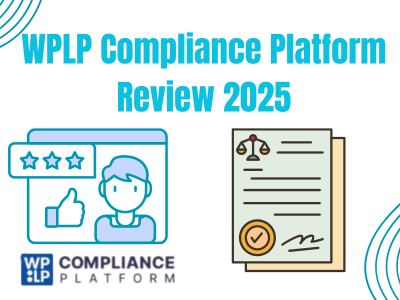When managing IT services, monitoring important KPIs can be hard. With a multitude of metrics and dashboards available, one can get lost in the data. Most businesses have difficulty understanding how to successfully accomplish objectives or pinpoint problems that may worsen over time. Did you know that poor performance indicator tracking can lead to missed business opportunities? Without clear data, you might miss trends that affect profitability, efficiency, or client satisfaction. The right metrics provide you with a clear path for better decision-making. In this article, we’ll explore the key KPIs to track in managed IT services agreements, helping you focus on what really matters to improve your business. From revenue patterns to customer satisfaction scores, you’ll get practical advice to improve your outcomes. Want to learn more? Keep reading!
Profitability KPIs
Understanding the key KPIs to track in managed IT services begins with profitability. Metrics like COGS and ARPU show where money flows in and out.
Cost of Goods Sold (COGS)
Cost of Goods Sold (COGS) refers to the direct expenses tied to delivering managed IT services. It includes costs like salaries for technicians, software licenses, and hardware provided to clients. Every dollar spent here impacts your profit margin directly. High COGS can signal inefficiencies or rising vendor prices that need addressing. Reducing unnecessary COGS can make a big difference in profitability without sacrificing quality. For instance, switching to bulk licensing agreements or improving technician schedules may lower operational costs. “Efficiency is doing things right; effectiveness is doing the right things.”. Next up: Recurring Revenue Rate explores consistent income streams in managed IT services.
Recurring Revenue Rate
A steady stream of consistent income keeps any managed IT services business afloat. Recurring revenue rate measures the reliable monthly income from service contracts or subscriptions. This important performance indicator shows how well your pricing model and retention strategies perform. Strong recurring revenue indicates solid client loyalty and stable financial health, as demonstrated by IT companies like Outsource Solutions Group that focus on long-term service models. For example, businesses offering long-term agreements often achieve higher rates compared to those dependent on one-off projects. Concentrate on increasing these numbers by introducing additional services or enhancing existing client packages without complicating processes.
Gross Profitability
Recurring revenue growth provides consistency, but gross profitability highlights the actual financial condition of a business. It reflects the portion of income remaining after accounting for COGS, such as software licenses or hardware procurement. Greater gross profit margins demonstrate effective cost control and opportunities for reinvestment. For example, sustaining a 50% margin enables allocation of resources for improved IT infrastructure or experienced technicians while preserving high-quality service standards.
Average Revenue Per User (ARPU)
Calculating Average Revenue Per User (ARPU) demonstrates the contribution of each client towards your revenue over a period. To calculate this figure one should divide the total monthly recurring revenue by the number of active clients. A growing ARPU signals higher profitability or successful upselling efforts. Tracking ARPU helps identify opportunities for package adjustments and cross-selling IT services. Business owners can focus on increasing client value without spending a lot more money or resources. Next, examine productivity metrics like average resolution time.
Productivity KPIs
Among the key KPIs to track in managed IT services agreements, productivity metrics like average resolution time and ticket ratios reveal how efficient your team really is.
Average Resolution Time
Average resolution time shows how fast IT teams address issues. It is an important measure in managed IT services because slow responses can annoy clients or interfere with their operations. For instance, if service tickets accumulate due to prolonged resolution times, it could indicate inefficiencies in team workflows or tools. Improving this measure involves simplifying incident response processes and defining clear responsibilities. Teams should focus on categorizing issues by priority and implementing automation for minor requests. Faster resolution times often result in better satisfaction ratings, linking client experience directly to performance results. First contact resolutions work well alongside this measure.
First Contact Resolution Rate
Resolving IT issues on the first interaction can save time and improve client satisfaction. A high First Contact Resolution Rate means fewer follow-ups, quicker fixes, and happier customers. It also reduces repeat tickets, decreasing operational workload for your team. Tracking this measurement highlights areas where support processes might fall short. For example, if problems take too long to fix, it might mean staff need more training or there aren’t enough tools to help them. Focus here ensures a smoother workflow while improving overall efficiency in handling opened/closed ticket ratios effectively.
Resource Utilization Rate
Tracking Resource Usage Rate helps gauge how effectively your team or tools are being used. It shows how much of the team’s time is spent on paid work compared to all the time they are available. For managed IT services, this provides efficiency insight and identifies underused resources that might drain profits. Keep an eye on trends over time. If employees consistently work below capacity, it could signal workload imbalance or scheduling flaws. Overloaded staff, on the other hand, risk burnout and errors in service delivery. Balance is key to maintaining productivity while keeping clients satisfied with dependable IT support solutions.
Opened/Closed Tickets Ratio
The opened/closed tickets ratio provides an understanding of your team’s workload and efficiency. It emphasizes how effectively your team is meeting client demands. A balanced ratio reflects stable operations. Below is a breakdown of its importance.
| Aspect | Description |
| Definition | The comparison of service tickets opened versus those resolved within a given time. |
| Why It Matters | A high number of unresolved tickets can indicate resource strain. It may also affect client satisfaction. |
| How to Measure | Divide the number of closed tickets by the number of tickets opened. After that, times the result by 100 to turn it into a percentage. |
| Ideal Ratio | A desirable ratio is close to 100% or slightly above, showing tickets are resolved at the same rate they are created. |
| Warning Signs | If the ratio consistently falls under 80%, your team might be overwhelmed. Or, processes might require enhancement. |
| Suggestions for Improvement | Automate repetitive tasks. Assign tickets based on expertise. Monitor ticket queues in real-time. |
| Advantages of a Balanced Ratio | Enhances response times. Prevents ticket backlogs. Builds client confidence and satisfaction. |
Client Experience KPIs
One of the key KPIs to track in managed IT services agreements is client satisfaction. Happy clients stay longer, and their feedback uncovers areas for improvement.
Satisfaction Rating
Tracking satisfaction ratings helps measure client happiness with managed IT services. Use tools like surveys, Net Promoter Scores (NPS), or feedback forms to collect information. A high rating often reflects dependable service delivery and clear communication. Strive for consistent progress by addressing recurring complaints promptly. Trends in low scores can reveal weaknesses in support, enabling teams to adjust and improve processes. Regular monitoring builds trust, decreasing customer turnover over time.
Customer Churn Rate
High customer churn can hurt the regular income of managed IT services. Churn means the number of clients who stop using your services during a certain time. A high churn rate shows that clients may be unhappy or not getting what they expected. This can lead to losing money and a bad reputation. To lower churn, fix client problems quickly and offer complete solutions. Keep track of trends to detect risks early. Retain more customers with dependable support and adherence to service level agreements.
SLA Compliance Rate
Failing to meet agreed-upon service levels leads to frustrated clients. SLA compliance rate measures how well you stick to the terms in your managed IT services agreements. For example, it checks if your response and fix times match what you promised in the contract. A low score often means there are problems or not enough resources that need quick action. Prioritizing strong performance here prevents breaches of trust with clients. Sticking to SLAs keeps relationships smooth while demonstrating reliability in technology management and IT support. Checking this number often helps protect your good name and avoid fines for poor service. Clear communication makes sure everyone knows what will happen, so nothing unexpected comes up later.
Customer Lifetime Value
Customer Lifetime Value (CLV) tells you how much money a client will give your business while using your managed IT services. A high CLV means the client is loyal and brings good profit over time. Keeping current clients is cheaper than always finding new ones. Watching CLV also helps you guess future earnings more easily. Offering reliable IT support, meeting service level agreements, and maintaining high satisfaction ratings helps increase CLV naturally. Loyal customers often choose additional services like reliable technology support over time, adding to recurring revenue streams effortlessly.
System Performance and Security KPIs
To fully monitor the key KPIs to track in managed IT services agreements, don’t overlook security and uptime. These metrics protect both client trust and operational flow.
Network Uptime
A dependable network results in reduced downtime and increased productivity. Network uptime represents the percentage of time IT systems remain functional. Consistently high uptime, typically 99.9% or more, reduces interruptions in business operations. Regular outages can damage trust and result in financial setbacks. Monitoring tools check performance and spot problems early, before they cause big trouble.
Incident Response and Resolution Time
Faster incident response reduces downtime. Managed IT services must react promptly during disruptions to prevent prolonged losses for businesses. Monitoring incident response time highlights how efficiently a team identifies and starts addressing issues. Slow responses can result in paused operations, dissatisfied teams, and upset clients. Resolution time reflects how long it takes to fully address the issue. Consistently speedy resolution times enhance client trust and minimize potential damages from extended outages. For instance, responding within 15 minutes but requiring days to resolve won’t be effective in meeting service level agreements (SLA). Time is valuable—prompt action ensures uninterrupted business operations and satisfied customers.
Security Breach Rate
Tracking the security breach rate helps measure the efficiency of an organization’s IT defense. A high rate can indicate vulnerabilities in firewalls, software updates, or employee training on phishing attacks. Managed IT services should work to lower this number to protect important data and avoid expensive breaks in service. Cyberattacks are happening more often every year. In 2022, the FBI got 800,944 reports of cybercrime. After an attack, businesses must react quickly to reduce the damage. Regular system audits and continuous monitoring also help detect potential threats before they grow into significant issues.
Conclusion
Tracking the right key performance indicators keeps managed IT services on target. Focus on data that highlights performance, customer satisfaction, and profit trends. Clear measurements help you address gaps and enhance outcomes. Solid figures lead to happier clients and improved results. Stay attentive by monitoring what matters most!

